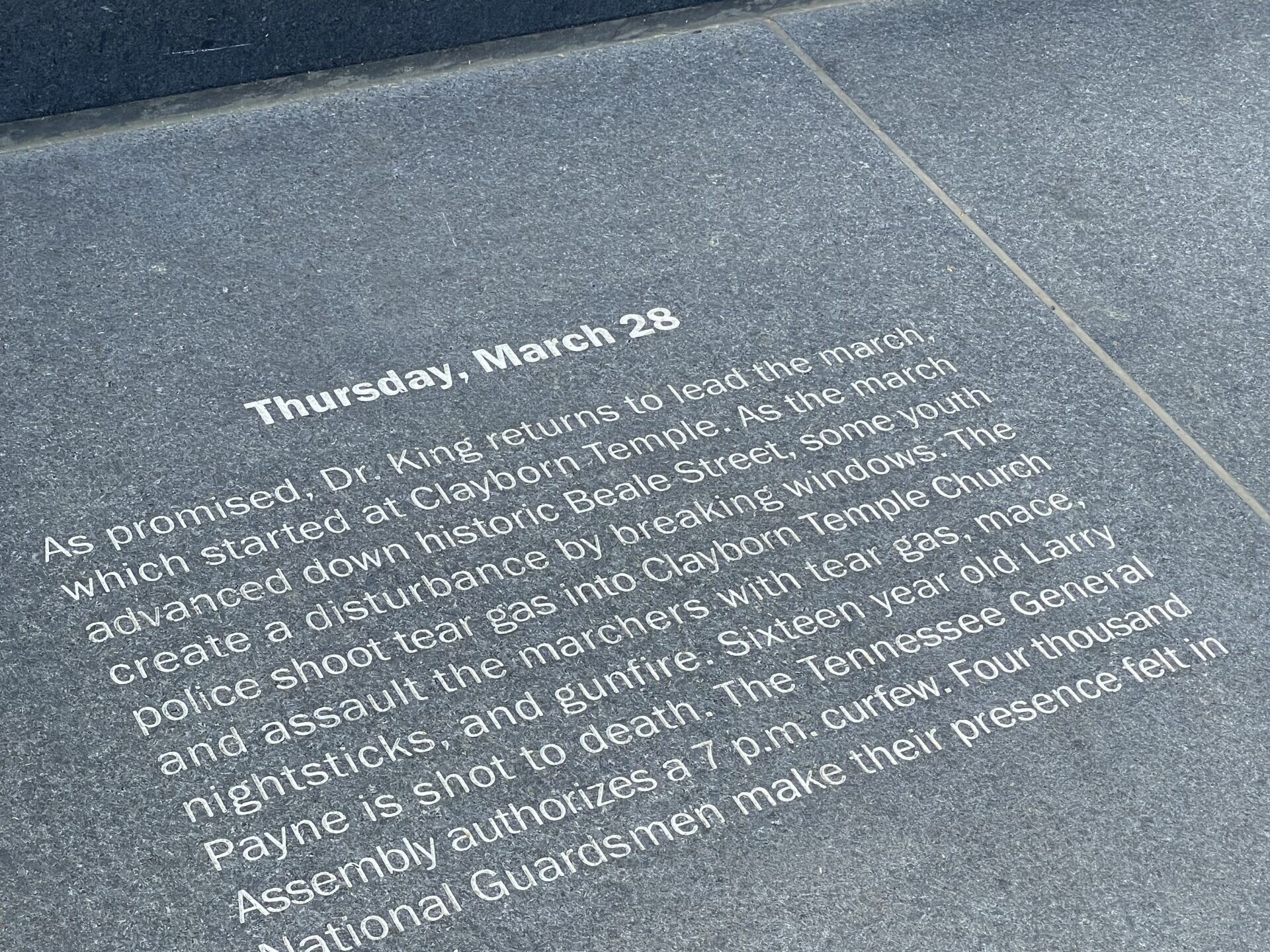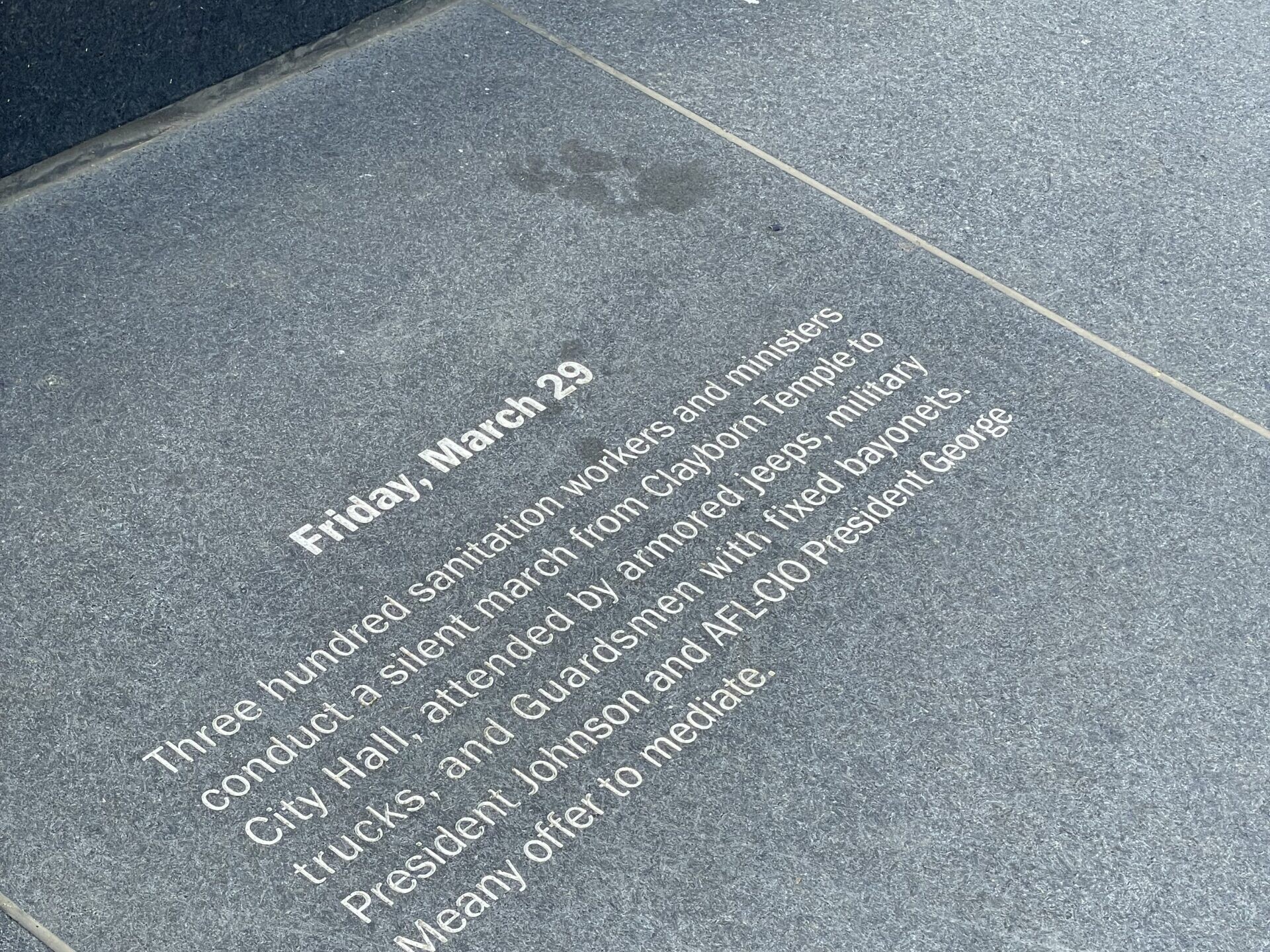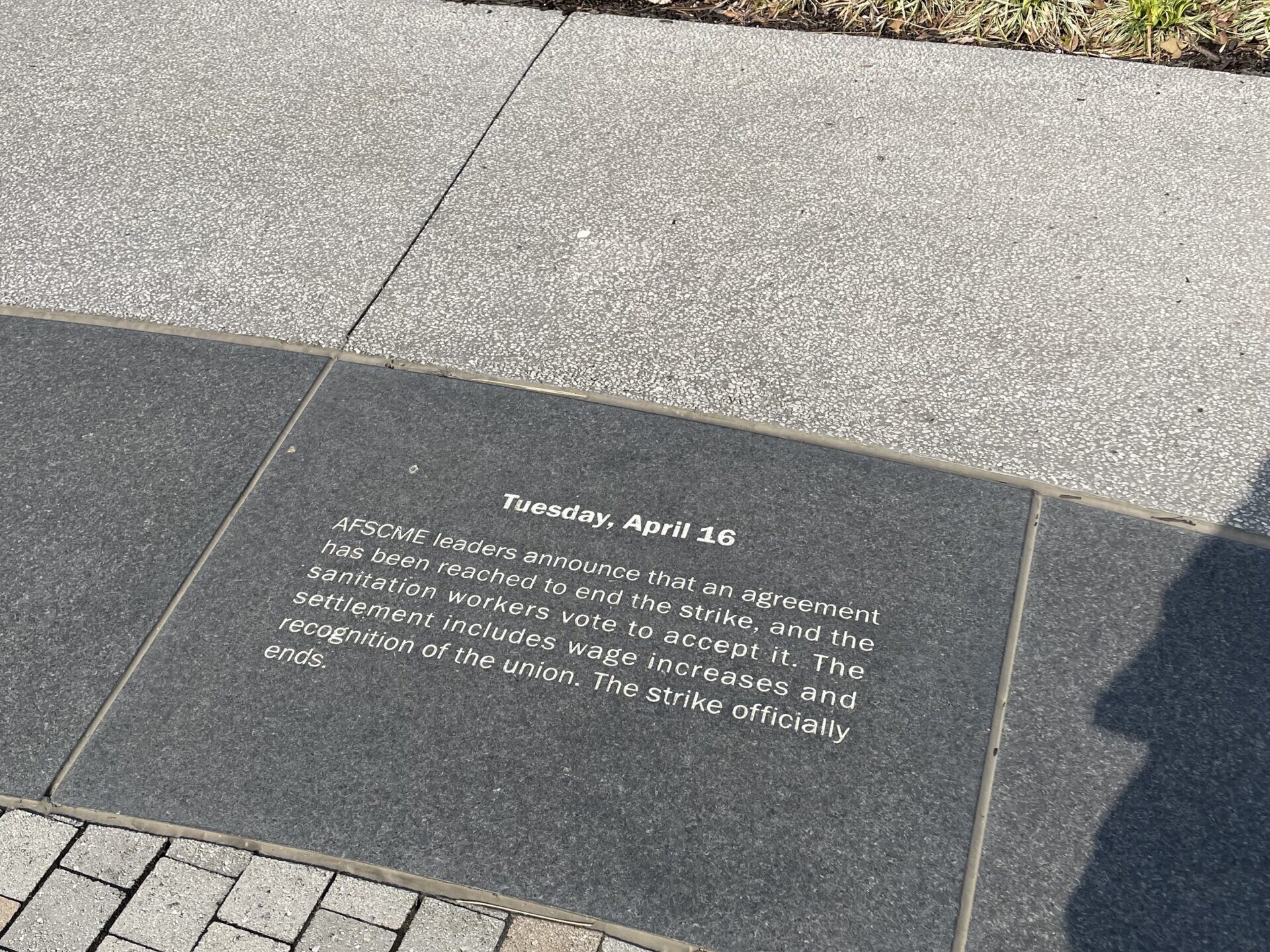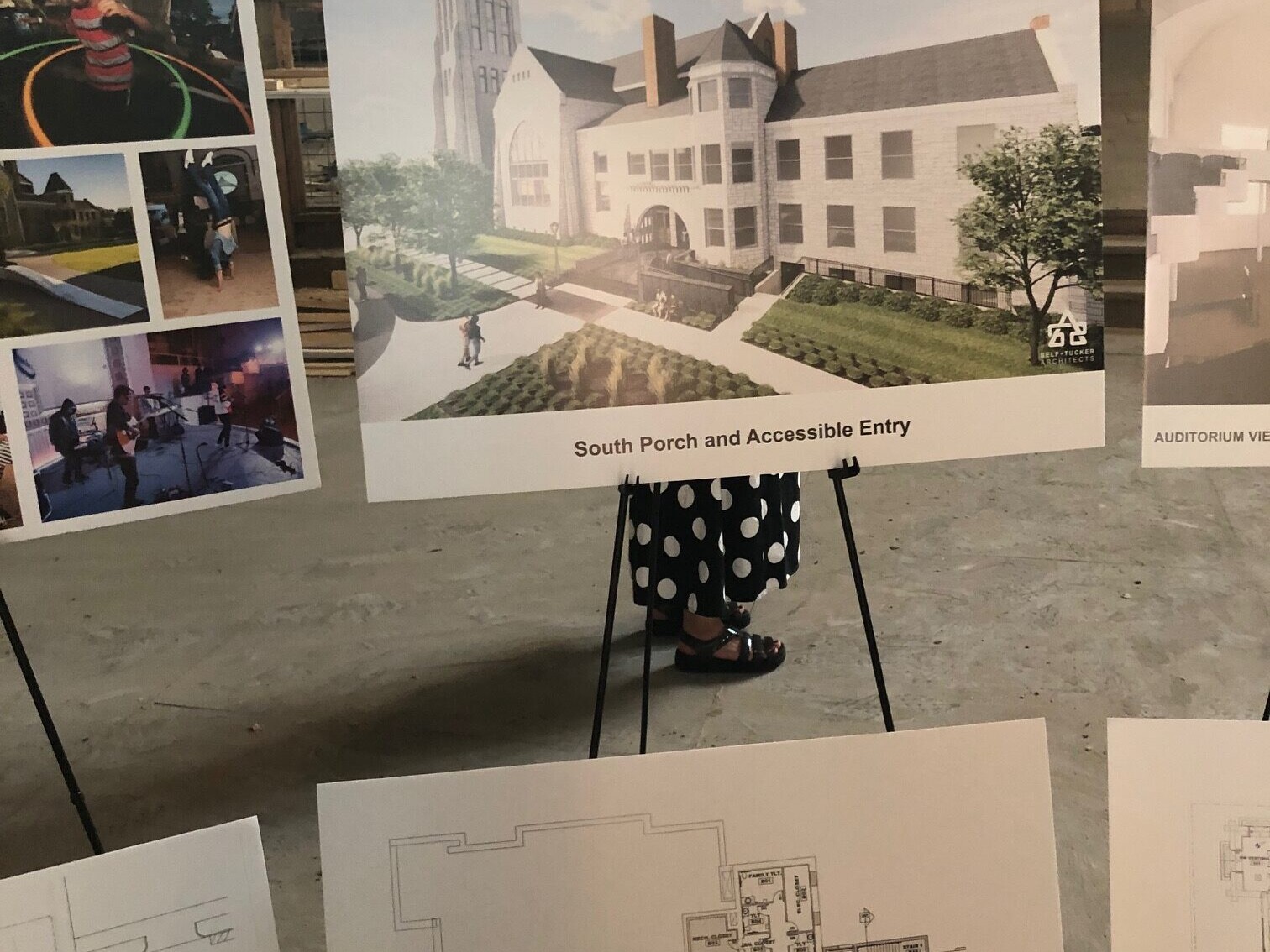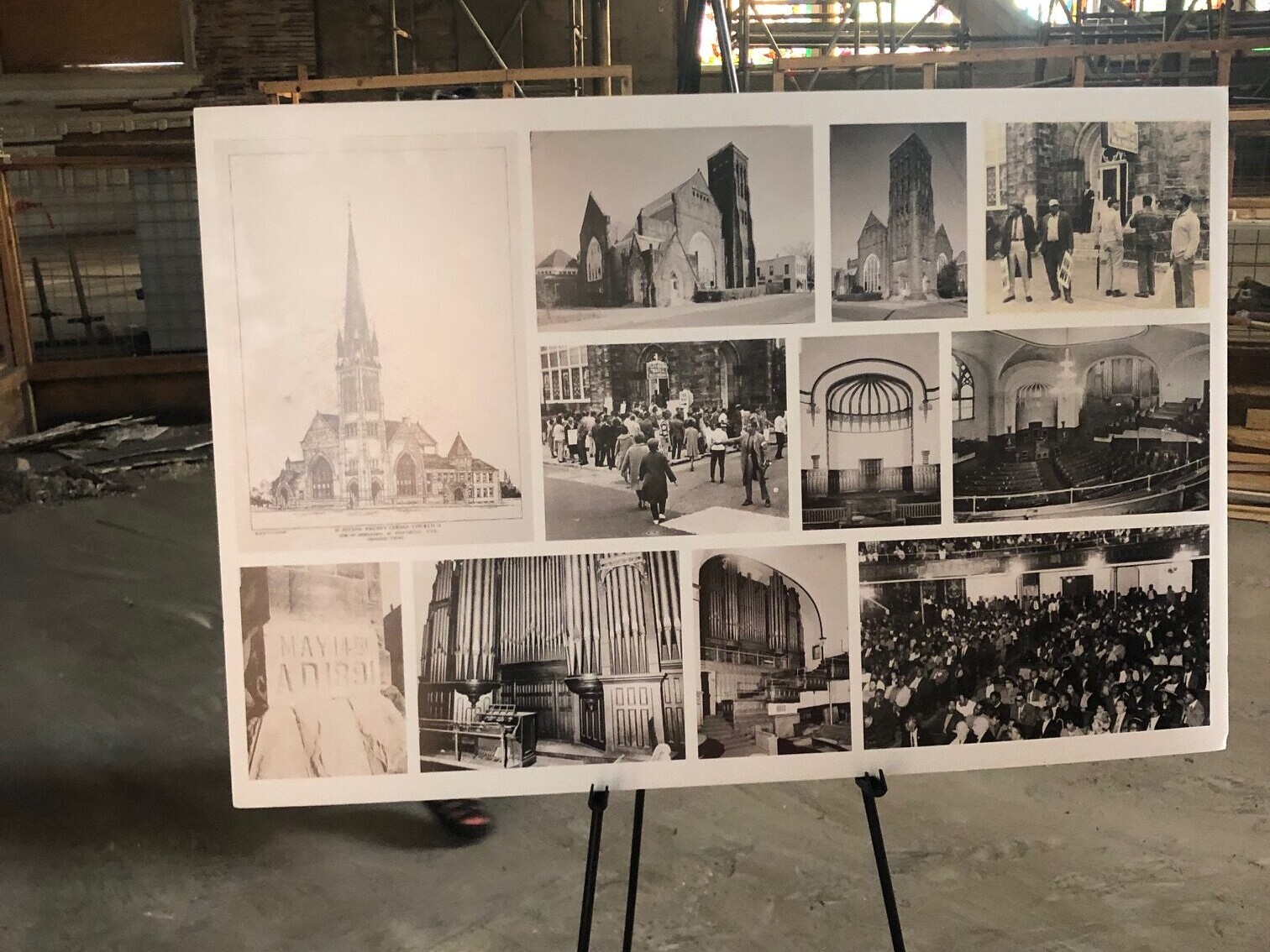MSC Celebrates Anasa Trouman’s Vision for Memphis as a Beacon of Hope
As Women’s History Month draws to a close and we approach the anniversary of the pivotal end of the sanitation workers’ strike on April 16, we seek to honor new chapters written in the legacy of this historical event by MSC’s board member Anasa Troutman and her work at Historic Clayborn Temple.
Nestled in the heart of Memphis, a city where the echoes of the past meet the momentum of the future, Historic Clayborn Temple stands as a beacon of resilience and hope, deeply rooted in the Civil Rights Movement’s legacy. Together with the dedicated women of the Big We and BIG We Foundation, Troutman is helping transform the temple and seed profound change in the city, championing a future where history’s lessons pave the way for a brighter, more inclusive tomorrow.
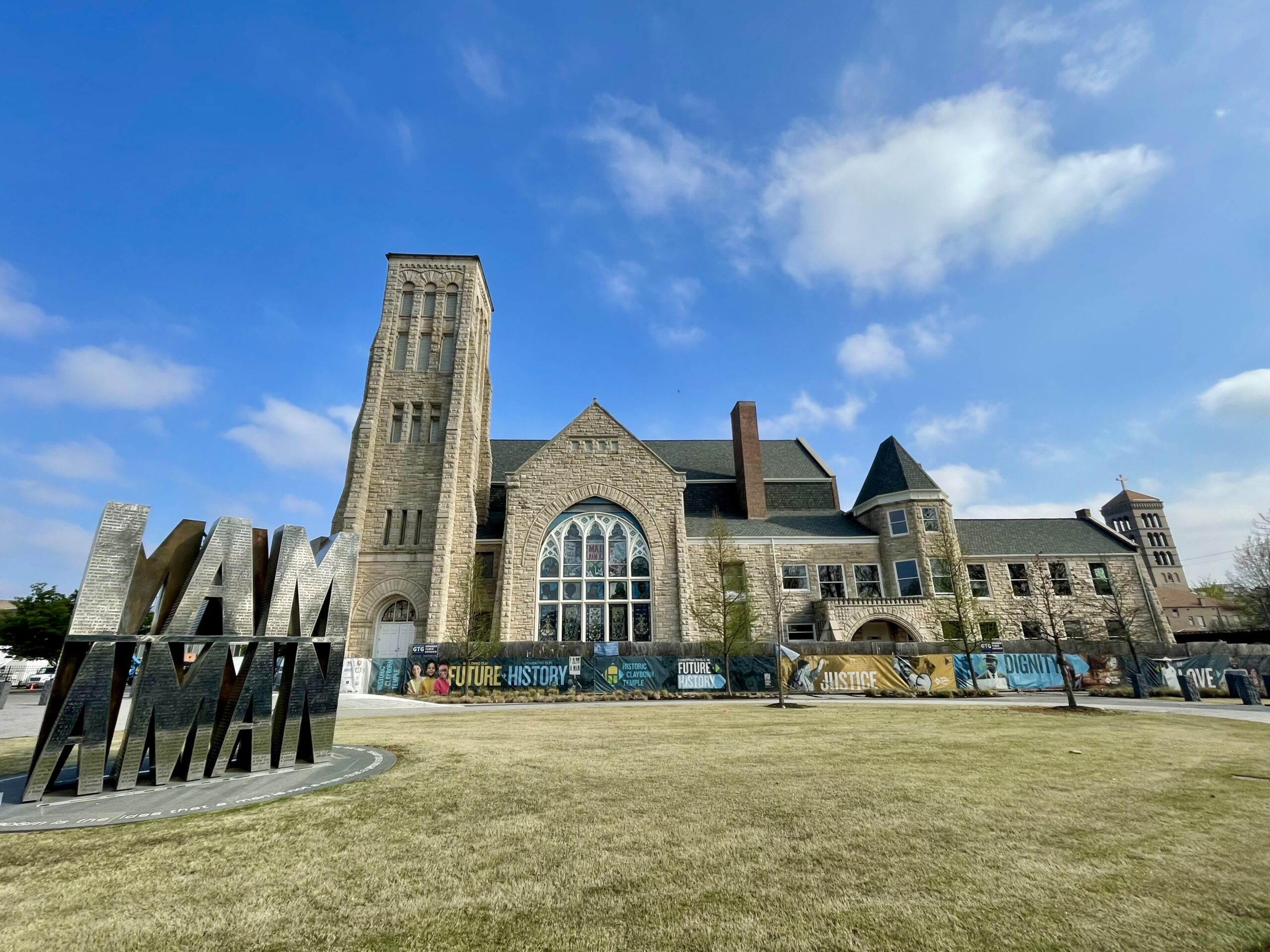
A Visionary's Pledge to Memphis
Troutman, the founder of BIG We Foundation, a Movement Strategy Network (MSN) partner, has been instrumental in the $25 million renovation of Historic Clayborn Temple, a site deeply entrenched in social justice history. With her multifaceted expertise as a music producer, cultural strategist, writer, and director, Troutman is not merely renovating a building; she’s reimagining a beacon for civil rights advocacy, artistic exploration, and meaningful community engagement in celebration of the temple’s legacy as a cultural and spiritual sanctuary.
Last year, Carla Dartis, MSC’s executive director, visited Memphis. In a chat on the Big We Podcast’s fifth season, Dartis described the site “as a living archive, a tangible reminder of the struggles and sacrifices that have shaped our collective journey toward justice.” Her words remind us of the temple’s deep significance as a symbol of resilience and community spirit, and a beacon in the ongoing quest for civil rights.
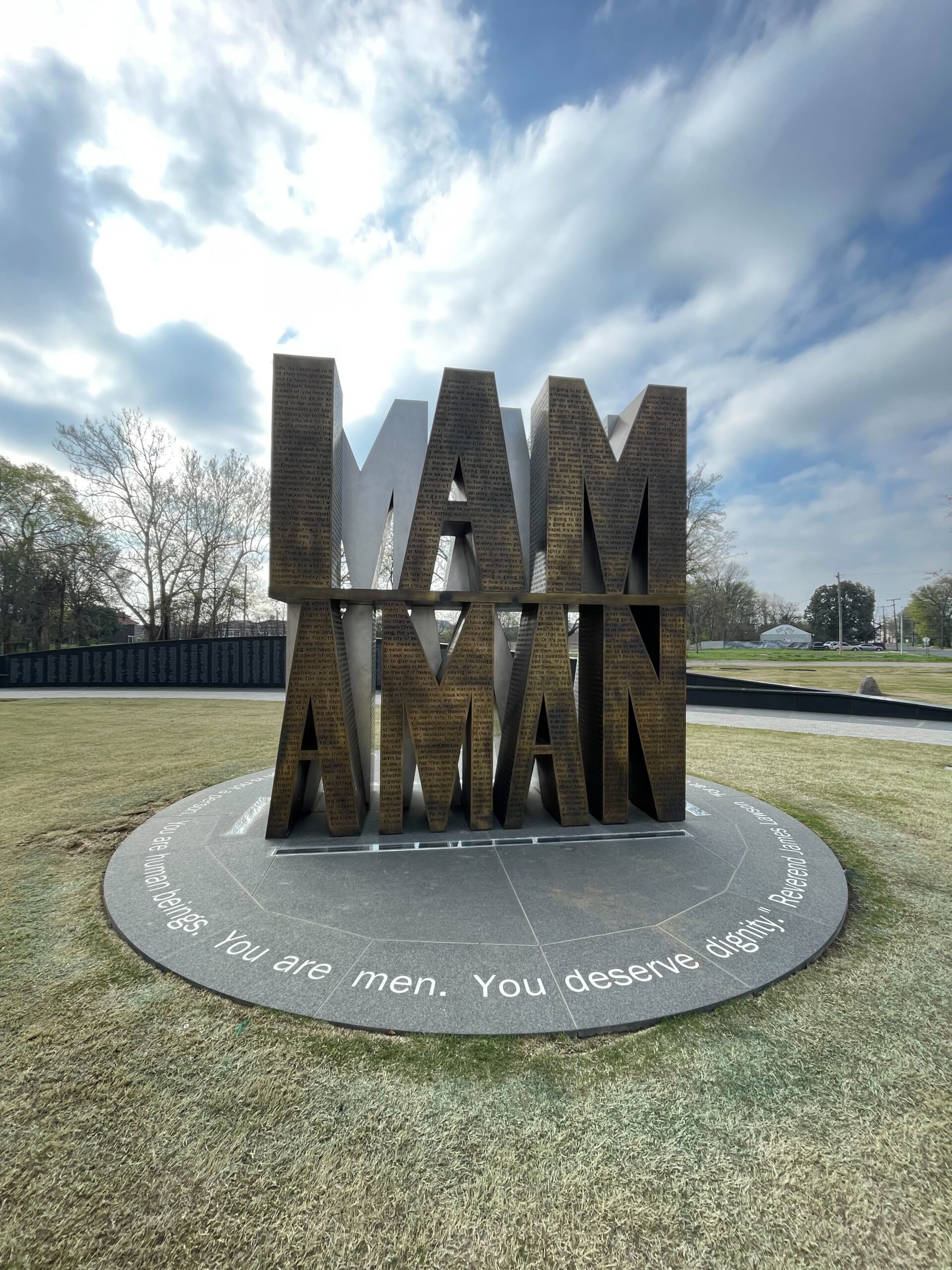
The Intersection of History and Renewal
Located in downtown Memphis, the temple played a starring role in the sanitation workers’ strike of 1968 — a significant chapter in the struggle for civil rights. The strike began after a tragic incident in February of that year, when two African American sanitation workers lost their lives due to a malfunctioning garbage truck. As a result, city workers demanded better pay, safer working conditions, and the right to unionize. The strike would draw national attention and the involvement of Dr. Martin Luther King Jr.
Clayborn Temple served as the epicenter of the strike, offering not just a meeting place but a symbol of communal strength and unity. It was here that strategies were devised, spirits were lifted, and the community came together to support the cause. The temple’s significance was further underscored by its close proximity to notable events and locations tied to the civil rights struggle in Memphis, including Mason Temple Church of God and Christ, where Dr. King delivered his prophetic “Mountaintop” speech the night before his tragic assassination at the Lorraine Motel.
On March 28, 1968, thousands congregated at the steps of Clayborn Temple A.M.E. Church in Memphis.
One march, led from the temple to city hall, was violently interrupted by police. When protesters retreated to the temple, police fired tear gas into the sanctuary — a sacred space turned into a scene of panic where attendees had to break stained glass windows to escape.
Clayborn Temple closed its doors in 1999. A significant revival effort began in 2015 under Clayborn Reborn (now Historic Clayborn Temple), as spearheaded by Frank Smith, and supported by Neighborhood Preservation, Inc. In 2018, the National Park Service contributed a significant grant to continue work. Now, under Troutman’s guidance, the new Clayborn Temple will honor its history and support future activism as a hub for community, education, and civil rights advocacy.
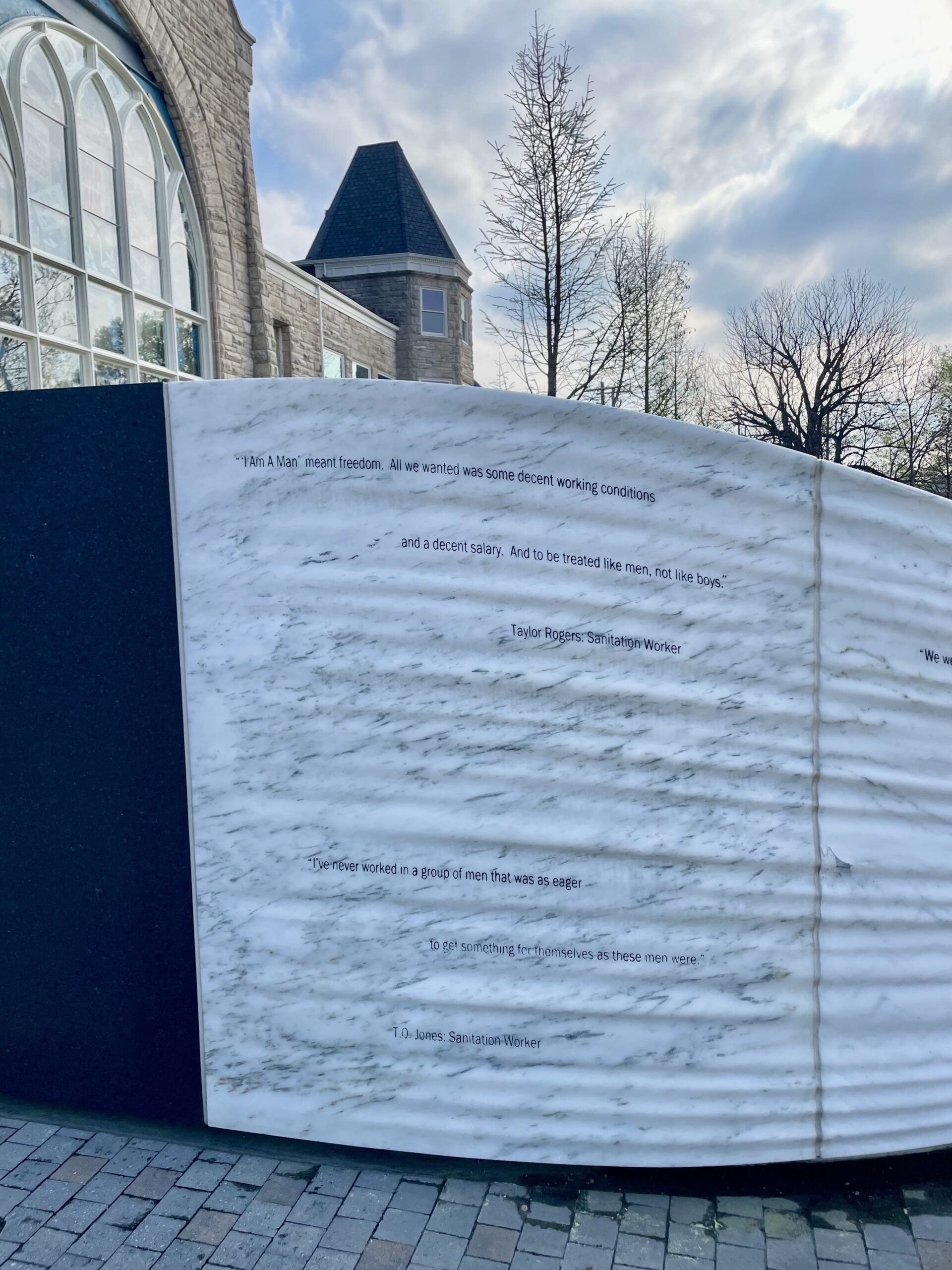
The national recognition and revitalization of landmarks like Clayborn Temple — which are already imbued with historical significance — play a crucial role in propelling social movements forward by fostering a sense of collective identity. That significance is detailed in a timeline across the tiles outside of the temple at I Am A Man Plaza — named for the strike’s “I AM A MAN” mantra, which underscored the humanity of these workers and the racial and economic disparities they faced.
Being there amplifies the temple’s significance. Dartis admits she “did not fully realize the significance of [Clayborn Temple] to the Civil Rights Movement and the partnership that was forged between local movement leaders and Dr. King in championing employment protections for African Americans. The strategic interplay of that partnership and Dr. King’s untimely death played a pivotal role in bolstering the unionization of Black sanitation workers and securing federal support for the advancement of civil rights for African Americans.”
Embracing Restorative Economics
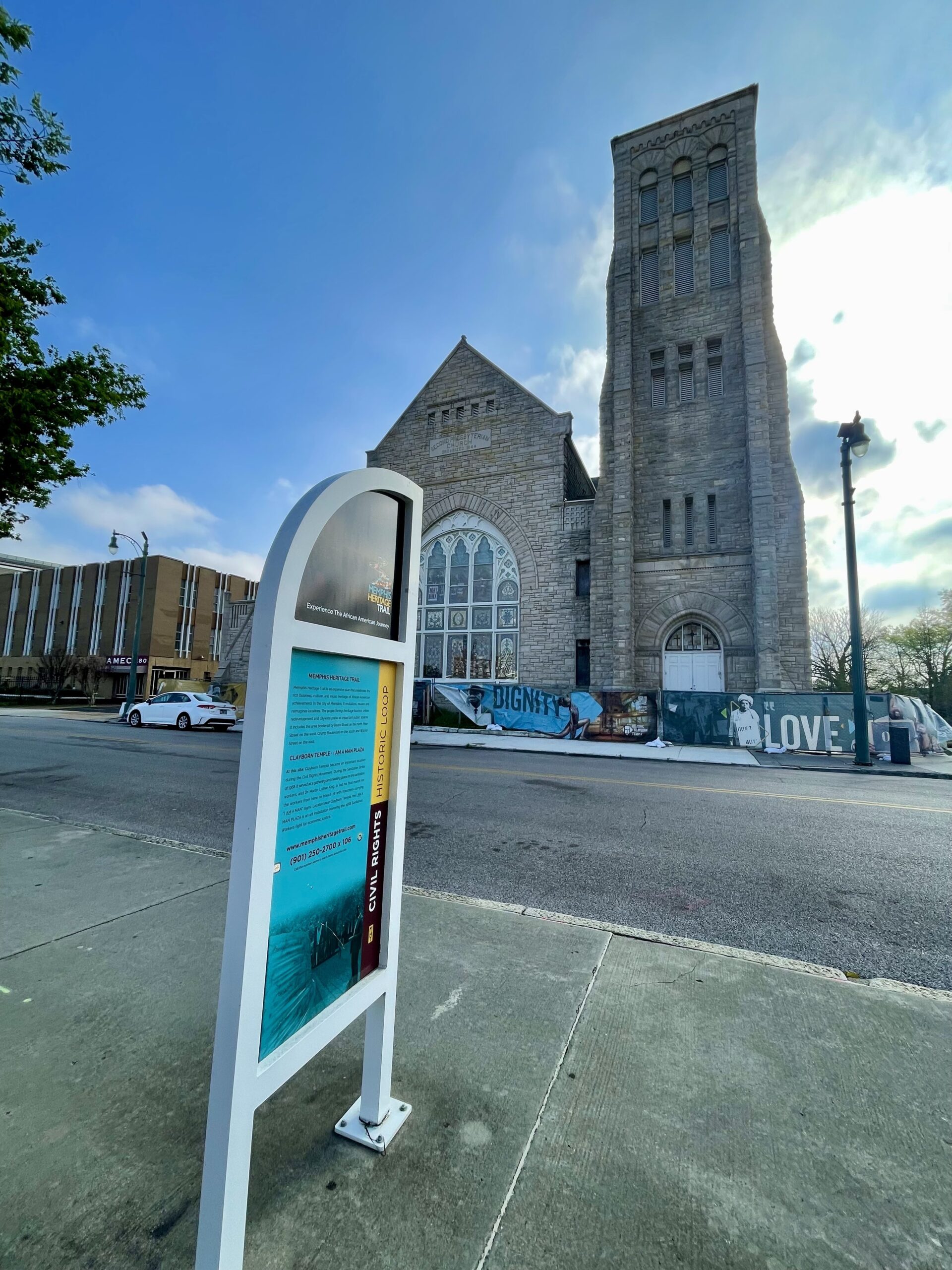
The blueprint for Clayborn Temple isn’t just about bricks and mortar; it’s a holistic approach that taps into restorative economics, aiming to weave joy, sustainability, and fair access to resources into the fabric of the neighborhood. The temple is nestled just behind the bustling FedEx Forum and a stone’s throw from the lively Beale Street, which, per Dartis, “is now a tourist trap filled with souvenir stores and entertainment spots not fully reflective of the cultural richness and movement heritage of Memphis.”
The area — wedged between the Mississippi River and the arteries of major interstates and dominated by expansive parking lots for the FedEx Forum — faces the harsh realities of gentrification and poor land use. With the National Civil Rights Museum just a few blocks away, “the location and its proximity to Beale Street hammers in the need for [the temple] to anchor a civil rights district in Memphis.” All said, the neighborhood’s history and present development challenges highlight the fine line between progress and preservation.
Troutman, in collaboration with the local Chamber of Commerce, rolled out a series of events and programming designed to invigorate the neighborhood’s economy. This collaboration, made in the spirit of true abundance, seeks to enhance the temple’s cultural and historical significance, spark economic vitality, and create an ecosystem where the community can come together and flourish. “With healing arts and culture programming, a museum that honors the history of the building, and community outreach initiatives that support economic justice,” Troutman told Archinect News that “we’re committed to reclaiming a sacred space for the community, and ensuring that the resilient spirit of this iconic landmark continues to inspire generations yet to come.”
In a conversation with Steve Dubb of Nonprofit Quarterly, Troutman said “true abundance is about recognizing and honoring everyone’s right to joy, fulfillment, and the opportunity to thrive.” This vision was shaped by transformative relationships that developed during her tenure at the Highlander Research and Education Center and while serving as a fellow at MSC.
In the same piece, she added that inclusivity is core to the project’s governance model and its deliberate focus on valuing and magnifying the voices tied to its rich history. This thoughtful approach aims to ensure the temple’s revival resonates with authenticity, collective stewardship, and community involvement.
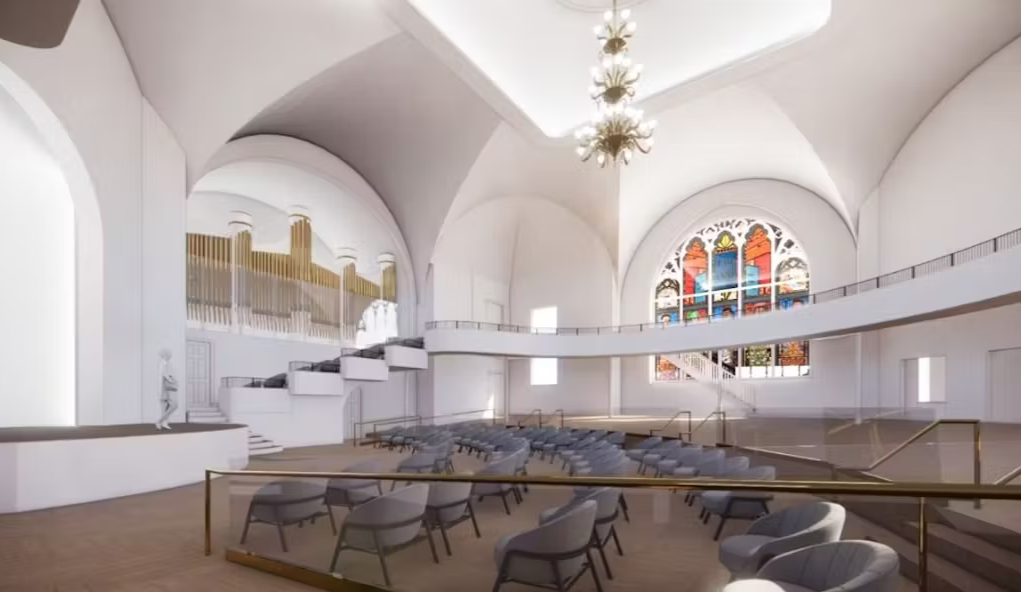
Welcoming Little Amal: A Testament to Global Solidarity
Clayborn Temple continues to stand as a beacon of empathy, understanding, and collective action. On October 4, 2023, Little Amal, a 12-foot-tall puppet symbolizing a young Syrian refugee, made a significant arrival at the temple. The parade, starting at the temple, was a vibrant fusion of local and international support and marked a key moment in Amal’s extensive 6,000-mile journey across over 35 U.S. cities.
Little Amal’s trek symbolizes global solidarity and aims to spark discussions on identity and heritage. To enrich the narrative, Memphis Girl — an eight-foot companion puppet crafted by the esteemed puppeteer Jeghetto — joined the Little Amal. Collaborating with a number of organizations, including Shelby County Schools and Memphis Youth Arts Initiative, Clayborn Temple facilitated workshops for kids to create additional puppets that were used in the parade. Troutman explains that the goal was to encourage “1,000 children from all over Memphis” making “puppets in their own image to be able to say things like, ‘I am beautiful, I am worthy, I am the future’.”
The parade continued to the Orpheum Theatre, a site chosen for its storytelling significance, where students from the Refugee Empowerment Program warmly welcomed Little Amal with personal messages. Troutman emphasized, “instead of trying to go and recruit all these young people to our organization, it felt really juicy and exciting to go to places where children already were because we want to support organizations that are already supporting young people, and we want to become part of their community and have them become part of our community. So, the message of our local work has amounted to building a culture of love. This project has really brought us closer to the Memphis community and I love that.”
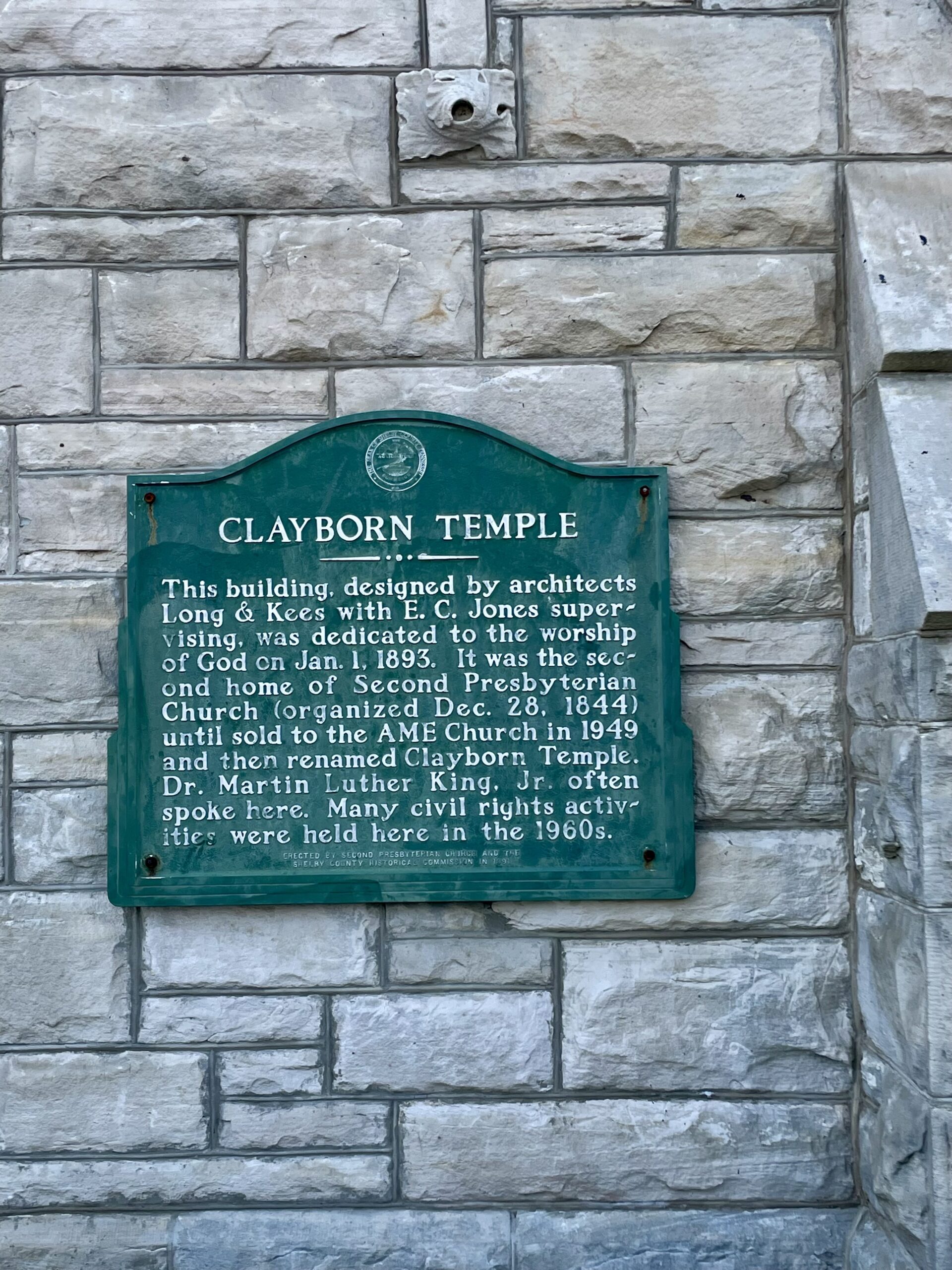
A Hub for Storytelling and Dialogue
As we stand at the threshold of a new era for Historic Clayborn Temple, we are reminded of the profound interplay between honoring our history and sculpting our future. This sacred space is set to emerge as a vibrant crucible for storytelling, dialogue, and active community engagement. Guided by the collective vision of Troutman and the broader community, the revival of this piece of history symbolizes a commitment to a community-led renaissance, inspiring both present and future generations to forge spaces that celebrate our shared narrative. The temple’s role as a cornerstone for healing, intersectional dialogue, and the nurturing of collective agency, pays homage to the rich tapestry of legacies that have resonated within these walls.
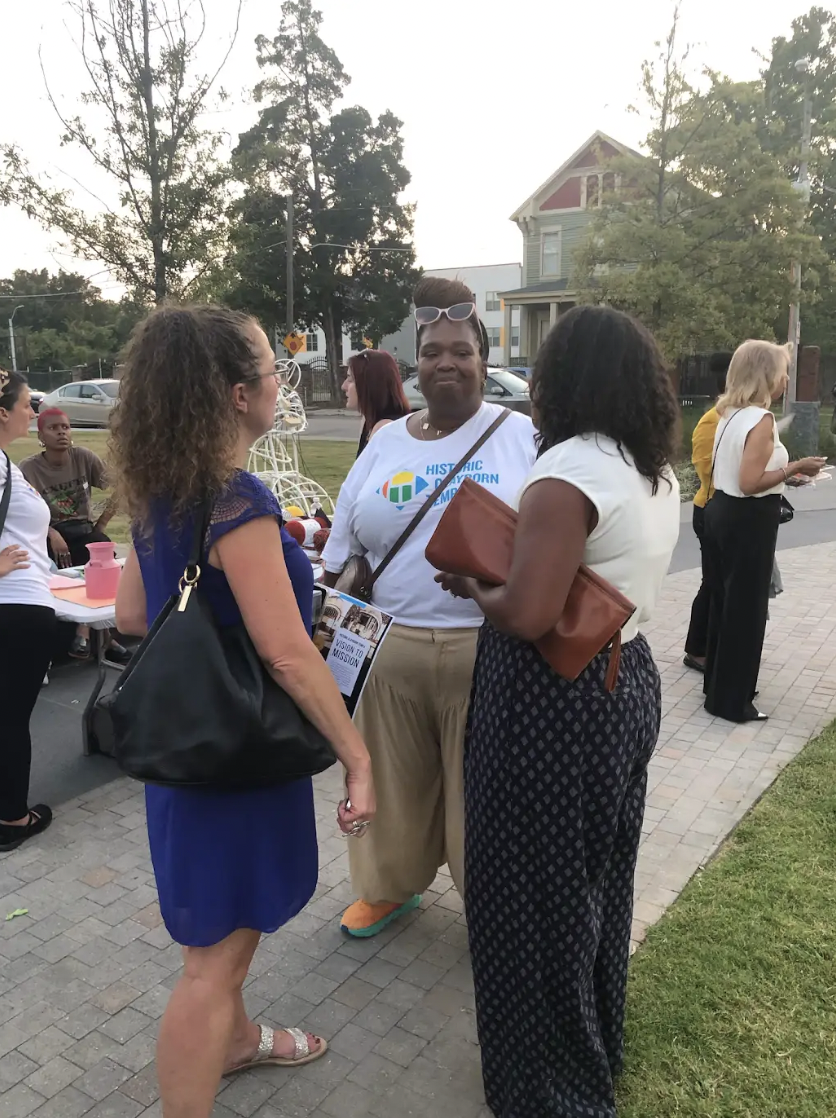
“In this rebirth, we aspire to be more than a historical monument,” reflects Troutman. Dartis echoes this sentiment, emphasizing the importance of reimagining historical sites not merely as relics but as living testaments to our journey toward justice and equity. “I was truly inspired and awestruck. It truly is a grand facility and the care and attention that Anasa’s team is bringing to the restoration is absolutely stunning — it brings history into the present and future!”


